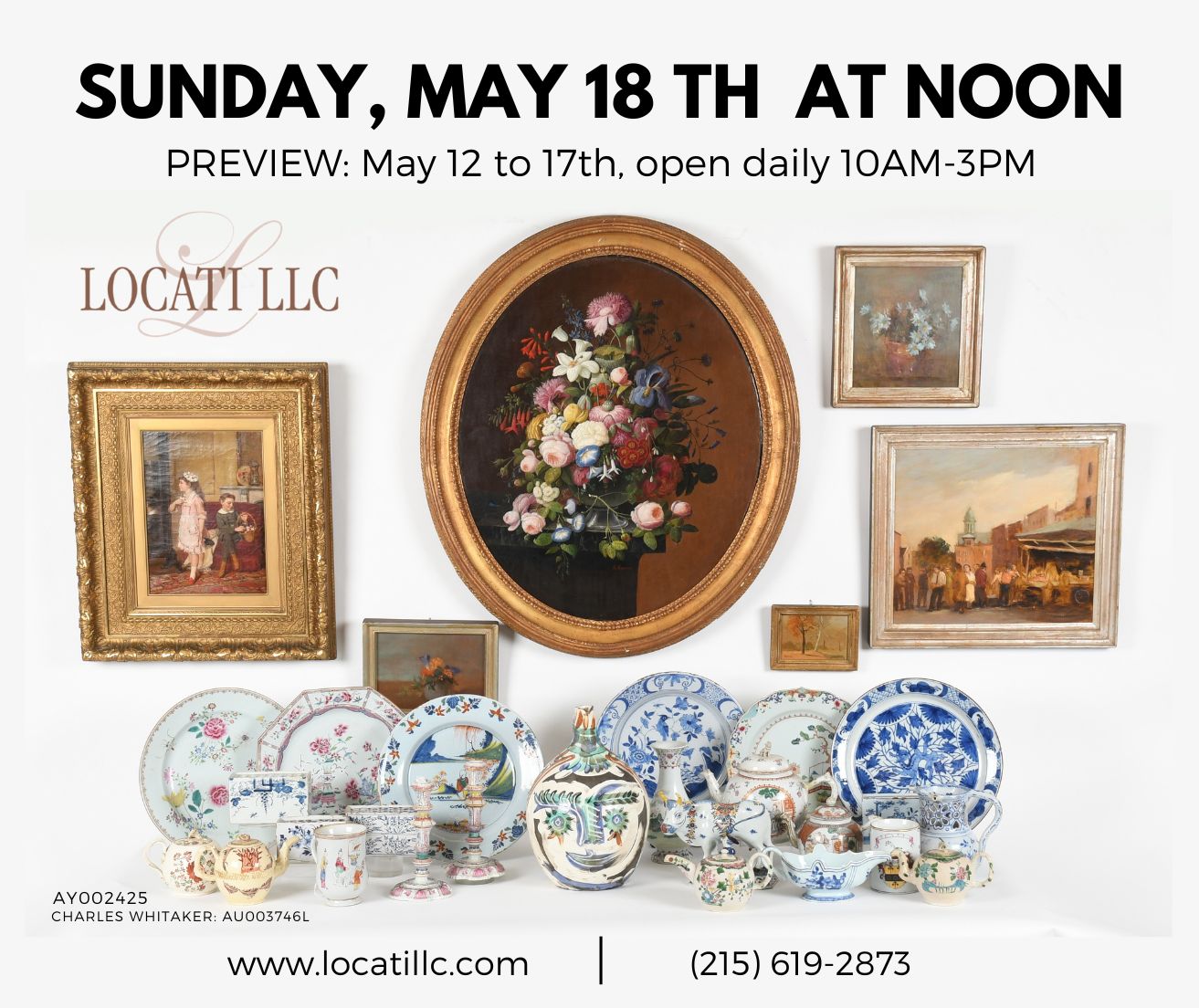Sotheby’s Americana
January 25th, 2013
|
Benjamin Henry Latrobe (1764-1820), A View of Mount Vernon with the Washington Family on the Terrace, signed and dated along the bottom, “Benjamin Henry Latrobe nat. del. [delineated from nature], July 16, 1796,” watercolor and pen and ink on paper, 16 3/8" x 24", consigned by a descendant of John Augustine Washington, the last of the Washington family to live at Mount Vernon. It sold for $602,500 (est. $500,000/700,000) in the salesroom to Curtis Viebranz, president and CEO of George Washington’s Mount Vernon Estate, Museum & Gardens, who said he was thrilled it will return to Mount Vernon. On July 16, 1796, scarcely four months after reaching America, Latrobe noted in his journal that he “set off on horseback for Mount Vernon, having a letter to the President from his Nephew my particular friend Bushrod Washington.” As a result of this visit, Latrobe left not only this remarkable candid portrait of the Washington family but also a word picture of the domestic arrangements at Mount Vernon. The description of his visit is in the catalog notes. Latrobe was served lunch and tea, which is captured in the watercolor. In addition to the president, Mrs. Washington, and Nelly Custis, it is likely that the two other figures are Tobias Lear, Washington’s secretary, and one of Lear’s young sons, most likely Benjamin Lincoln Lear, age five. After tea, Washington engaged Latrobe in another hour’s conversation, largely on agricultural matters, according to Latrobe’s journal.
The Samuel Talcott Chippendale carved cherrywood blockfront desk-and-bookcase, probably Hartford, Connecticut, 1765-75, possibly 1767, 97½" high x 43¼" wide x 25¼" deep, case width 39½", is from the collection of scholars Thomas P. and Alice K. Kugelman. It sold for $1,082,500 to Leigh Keno for John and Marjorie McGraw. It appears to retain its original finish, cast brass hardware, and finials. It was accompanied by three historically related books. This desk-and-bookcase is one of the earliest blockfront pieces known from the Connecticut River valley. It was likely commissioned by Samuel Talcott Sr. (1711-1797), a member of the distinguished Talcott family of Connecticut and a prominent Hartford merchant and landowner, for his son, who married Abigail Ledyard in 1767. The work is by an adept unidentified Hartford cabinetmaker who combined Boston high-style design with Wethersfield style decoration and construction techniques. The Kugelmans bought it from the descendants of the first owner.
This pair of two-handled soup tureens by Ball, Black & Co., New York, 1865-70, was the property of Brooke Astor and the Astor family. Measuring 16¼" wide each over the handles and weighing 190 ounces, excluding the plated liners, the lot sold on the phone for $50,000 (est. $20,000/30,000).
Federal bird’s-eye maple and flame birch inlaid mahogany two-drawer worktable, Portsmouth, New Hampshire, circa 1810, branded twice “G.W. Seaward” on the back of the lower drawers, 31½" high x 17" wide x 16½" deep. The brand is for the owner. It sold on the phone for $80,500 (est. $15,000/30,000.) At Sotheby’s in October 1987, it sold for $14,300. |
New York City
Photos courtesy Sotheby’s
Everyone wants to sell in New York City in January. That’s why Sotheby’s had an embarrassment of riches to offer to those who made the pilgrimage to the city for Americana Week. It took days to examine carefully all 639 lots of furniture, folk art, needlework, silver, prints, and Chinese export porcelain offered on January 25 and 26. Those who made the effort were rewarded.
Sotheby’s offered objects from the collection of Alice and Thomas Kugelman, who wrote the regional study of Connecticut furniture; furniture deaccessioned from the Philadelphia Museum of Art (PMA) to pay for acquisitions; and a house full of furnishings from Dr. Larry McCallister of Indiana, who said he had not stopped collecting but wanted to sell some things to buy others. There was a large collection of schoolgirl embroideries from California and some Gothic Revival furniture from the estate of Lee Anderson, a passionate New York collector. All of it came to auction at the same time. It was offered along with single objects consigned by descendants of original owners and from collectors who are downsizing.
Museums were active buyers, and seasoned collectors competed. Dealers advised their clients, and some bought carefully for stock, paying far less than the prices a decade ago. A few worthy objects performed very well. The Kugelmans’ cherrywood desk-and-bookcase, probably made in Hartford, Connecticut, in 1767, sold for $1,082,500 (with buyer’s premium), a record for Connecticut furniture. That price is nearly twice as much as the previous record, $576,000, paid in January 2006 at Sotheby’s for the William Walker block-and-shell desk-and-bookcase made by Calvin Willey.
The Kugelmans’ cherrywood side chair made by Eliphalet Chapin for Alexander King in East Windsor, Connecticut, sold together with a King family silver spoon for $170,500 (est. $20,000/30,000) to Woodbury, Connecticut, dealer David Schorsch for a client. Schorsch found a needlework chair seat for it at the Winter Antiques Show.
Not every lot of the Kugelman furniture performed as well. The Harland family shell-carved cherrywood chest of drawers, probably made in Chatham, Connecticut, sold on the phone for $98,500 (est. $100,000/300,000). At Sotheby’s in January 1997, it sold to Connecticut dealer Marguerite Riordan for $178,500.
Other furniture sold well below the prices of a decade ago, and some did not sell at all. There were no buyers for Sarah Fulton’s Queen Anne figured mahogany tray-top tea table with candle slides, Boston, Massachusetts, circa 1755, a lyrical design with a rich dark surface and a label on its underside reading “Very fine Queen Anne Tea Table-1720-1750-Belonged to Sarah (Bradlee) Fulton, sister in law of Robert Fulton, inventor of steamboat. She lived at the corner of Hollis and Tremont Sts. in Boston and her brothers were said to have dressed up as Indians in her house preparatory to participating in the ‘Boston Tea Party.’” This was the most highly developed of the ten tray-top tea tables offered during the week and the one with historical significance. It was estimated at $500,000/1,000,000. The underbidders for another top-rate Boston tray-top tea table that sold to Todd Prickett for $962,500 at Christie’s had no interest in this one, even with its impressive provenance and faultless form. Prickett’s usual competition, Bill Samaha, did not raise his paddle, which demonstrates how thin the market is at the top.
Another work with historic interest sold without competition. View of Mount Vernon with the Washington Family on the Terrace, a watercolor drawing, signed and dated along the bottom “Benjamin Henry Latrobe nat. del July 16, 1796,” sold on one bid to Curtis Viebranz, president and CEO of Mount Vernon, who paid $602,500 (est. $500,000/700,000) and will return it to Mount Vernon from whence it came. It was the property of a descendant of John Augustine Washington III, the last of the Washington family to live at Mount Vernon. The watercolor has a long exhibition history.
Sotheby’s sold 443 of 639 lots offered, a little more than 69% for a total of $9,976,830, well below expectations. Presale estimates were $9.2/15.1 million (without buyers’ premiums) for the various-owners sale that totaled $8,681,885. Dr. Larry McCallister’s collection was estimated at $1.8/3.3 million, and the total came to $1,294,944. Much of the McCallister collection had been on the market recently and therefore was not fresh to the seasoned collectors who make up most of the market.
Some rare forms sold well over estimates, but many were hammered down toward the low end or below estimates. A William and Mary dressing table attributed to John Head, circa 1725, sold for $104,500 (est. $15,000/30,000) to Delaware dealer James Kilvington for a collector, underbid by dealer Philip Bradley. It is a rare form that sold for $49,500 at Sotheby’s in 1987. Bradley paid $182,500 (est. $100,000/300,000) for a Philadelphia dressing table made 50 years later, probably in the shop of Benjamin Randolph, and deaccessioned by the Philadelphia Museum of Art (PMA). A pair of Philadelphia mahogany side chairs, the carving attributed to John Pollard, made for the Wharton family, circa 1770, matches a pair still in the PMA’s collection. They sold for $146,500 (est. $80,000/120,000) to a collector in the salesroom. A Philadelphia tea table given to the PMA by Mrs. William Logan McCoy also sold for $146,500 (est. $150,000/300,000) to Alan Miller of Quakertown, Pennsylvania. Its condition was pristine. A Mahantongo four-drawer chest, the catalog cover lot, deaccessioned by the PMA, brought more than any of the formal furniture, $218,500 (est. $200,000/400,000) from dealer Roberto Freitas of Stonington, Connecticut. Two Philadelphia easy chairs, one with an $800,000/1,200,000 estimate and the other with a $300,000/600,000 estimate, were ignored, and a touted Philadelphia dressing table failed to sell.
A pair of Baltimore painted klismos chairs, offered one at a time, sold for $122,500 and $98,500 to Massachusetts dealer Clark Pearce. A similar pair sold two years ago at Sotheby’s for $194,500 each. A pair of Baltimore card tables that sold for $38,500 in 1988 at Sotheby’s Andy Warhol sale sold for $40,625 (est. $40,000/60,000).
Lee Anderson’s Gothic furniture was not in the best condition, but there was museum interest in major pieces, and collectors bought most of the rest. A rare walnut side chair designed by Alexander Jackson Davis, probably made by Burns & Brothers, 1855-59, sold for $116,500 (est. $15,000/30,000) to a museum, even though the feet were extended two inches. A monumental Gothic Revival armchair by Davis, circa 1857, also attracted museum interest and sold for $46,875 (est. $15,000/30,000).
Museums had interest in schoolgirl needlework. Colonial Williamsburg got an early sampler by Mary Chicken, dated 1745, whose instructress was Elizabeth Hext at Goose Creek in Charleston, South Carolina. Philadelphia dealer Amy Finkel did the bidding for Williamsburg and said it was worth every bit of the $68,500 (est. $8000/12,000). The collection of Mary Jaene Edmonds was well documented in her 1991 book Samplers and Samplermakers: An American Schoolgirl Art, 1700-1850, but the quality was not as high as the needlework in the collection of Betty Ring that Sotheby’s sold a year ago. Some pieces had condition problems. Nevertheless about a dozen sold for $10,000 or more. One made by Nancy Graves (Ku-To-Yi) at the Cherokee Mission, Dwight, Arkansas, sold together with two California samplers for $86,500 to Historic Arkansas Museum, underbid by another museum.
The collection of Dr. Larry McCallister sold from a separate catalog on Saturday afternoon. There were some high moments and some disappointments. The Hall family mahogany bonnet-top chest-on-chest attributed to Benjamin Frothingham, Charlestown, Massachusetts, circa 1770, sold for $194,500 (est. $150,000/300,000), not quite as much as the $230,500 the doctor paid for it at Sotheby’s in September 2008. McCallister sold too soon. Five years may be long enough to hold some contemporary art and sell at a profit, but it is not long enough for Americana.
McCallister’s Pennsylvania red-painted comb-back Windsor armchair, labeled “best” in Albert Sack’s book Fine Points of American Furniture, provoked the most competition, and it sold to Massachusetts dealer Elliott Snyder in the salesroom for $92,500 (est. $40,000/80,000).
McCallister has a wide range in taste. His delicate Federal bird’s-eye maple and flame birch inlaid mahogany two-drawer worktable, made in Portsmouth, New Hampshire, circa 1810, sold for $80,500 (est. $15,000/30,000), and his massive gilded wood gallery clock, the works attributed to Simon Willard, with carving attributed to Samuel McIntire, went for $74,500 (est. $25,000/50,000).
McCallister collected every variant of a side chair with a distinctive and fragile back taken from a design in the London Chair-Makers’ and Carvers’ Book of Prices for Workmanship and made in John and Thomas Seymour’s shop in Boston. Some of these chairs have saber legs; others have turned and reeded legs. One pair of these Federal flame birch veneered mahogany saber-leg side chairs sold for $68,500 (est. $60,000/120,000), and another set with saber legs, canted instead of facing straight on, went for $34,375. (One had some condition problems; reportedly the buyer had four that matched.) Two with reeded legs sold for $25,000 each (est. $25,000/50,000) to Clark Pearce.
A Caille Brothers “The Liberty Bell” nickel slot machine with three wheels sold for $21,250, the same price paid for a New England tray-top tea table with an Israel Sack provenance.
The bargain of the week was a Classical ormolu-mounted giltwood and gilt-stenciled rosewood pianoforte, circa 1830, with a stool possibly by Phyfe & Sons, that sold for $3125 to a couple from Georgia who had no intention of buying it but couldn’t resist. “We have so much Classical furniture that we had to buy the house next door, and we use them both,” they said. “One has twelve-foot ceilings and the other has fourteen-foot ceilings, so we can fit it in.”
It is not easy to generalize about the market for Americana. The pictures and captions show what was embraced at Sotheby’s in January 2013, and when possible names the buyers and gives the market history.
For more information, contact Sotheby’s at (212) 606-7000 or (www.sothebys.com).
|
|
|
The buyer on the phone was Swannee Bennett, deputy director and chief curator of the Historic Arkansas Museum, who said he did the bidding for the sampler from a duck blind on his farm. The underbidder was another museum. “We had to have this sampler,” said Bennett when reached by phone. “The mission of the Historic Arkansas Museum is to collect and display documented examples of the fine, decorative, and mechanical arts produced by artisans and artists in Arkansas from the eighteenth through the twentieth centuries in order to interpret Arkansas’s creative legacy. We are working on the third and fourth volumes of our Made in Arkansas catalog.” |
|
|
|
|
|
|
|
|
|
|
|
|
|
|
|
|
Originally published in the April 2013 issue of Maine Antique Digest. © 2013 Maine Antique Digest


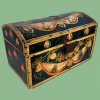







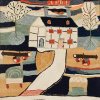
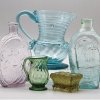


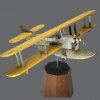

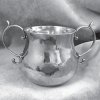




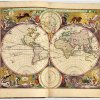


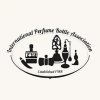
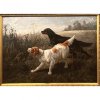


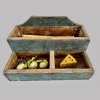

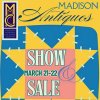

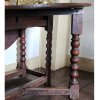












 Massive (7'1½" high) gilded and carved wood gallery clock, works attributed to Simon Willard, the carving attributed to Samuel McIntire, Salem and Boston, Massachusetts, circa 1810, sold for $74,500 (est. $25,000/50,000). At Sotheby’s “Masterpieces from the Time Museum: Part II” sale in June 2002, it sold for $80,662. McCallister collection.
Massive (7'1½" high) gilded and carved wood gallery clock, works attributed to Simon Willard, the carving attributed to Samuel McIntire, Salem and Boston, Massachusetts, circa 1810, sold for $74,500 (est. $25,000/50,000). At Sotheby’s “Masterpieces from the Time Museum: Part II” sale in June 2002, it sold for $80,662. McCallister collection.
 Large Chinese export porcelain Famille Rose baluster vase and cover, circa 1735, 34¼" high, sold for $62,500 (est. $8000/ 12,000).
Large Chinese export porcelain Famille Rose baluster vase and cover, circa 1735, 34¼" high, sold for $62,500 (est. $8000/ 12,000). The three samplers (one shown) in lot 306 included a rare one. It was done by Nancy Graves (Ku-To-Yi) (b. 1817), stitched at the Cherokee Mission, Dwight, Arkansas, and dated 1828. The 14" x 14" sampler is worked in silk thread on linen in cross stitches and reads “Let western girls this sampler view/ And viewing let them copy too/ Learn well to mark the way that’s/ Good/ The path to glory and to God/ Wrought by/ Nancy Graves/ Cherokee Mission School Dwight/ Arkansas, July 9/ for Mr. Kingsbury 1828.” According to Sotheby’s catalog, the schoolmistress was missionary Ellen Stetson (b. 1783). There are three pages of information on this sampler in Mary Jaene Edmond’s book. The other samplers in the lot—one by Emily Carter, age 24, and dated June 22, 1900, and another by Abbie Ann Carswell (b. 1845), stitched in San Francisco, California, in 1857 at the Union Street School—were not the reason the lot sold for $86,500 (est. $5000/7000).
The three samplers (one shown) in lot 306 included a rare one. It was done by Nancy Graves (Ku-To-Yi) (b. 1817), stitched at the Cherokee Mission, Dwight, Arkansas, and dated 1828. The 14" x 14" sampler is worked in silk thread on linen in cross stitches and reads “Let western girls this sampler view/ And viewing let them copy too/ Learn well to mark the way that’s/ Good/ The path to glory and to God/ Wrought by/ Nancy Graves/ Cherokee Mission School Dwight/ Arkansas, July 9/ for Mr. Kingsbury 1828.” According to Sotheby’s catalog, the schoolmistress was missionary Ellen Stetson (b. 1783). There are three pages of information on this sampler in Mary Jaene Edmond’s book. The other samplers in the lot—one by Emily Carter, age 24, and dated June 22, 1900, and another by Abbie Ann Carswell (b. 1845), stitched in San Francisco, California, in 1857 at the Union Street School—were not the reason the lot sold for $86,500 (est. $5000/7000). Rare needlework sampler by Mary Chicken, attributed to Elizabeth Hext, the instructress at Goose Creek in Charleston, South Carolina, dated 1745, worked in silk stitches on a linen ground with hem-stitched borders, 11½" x 8", sold for $68,500 (est. $8000/12,000) to Amy Finkel, bidding for Colonial Williamsburg.
Rare needlework sampler by Mary Chicken, attributed to Elizabeth Hext, the instructress at Goose Creek in Charleston, South Carolina, dated 1745, worked in silk stitches on a linen ground with hem-stitched borders, 11½" x 8", sold for $68,500 (est. $8000/12,000) to Amy Finkel, bidding for Colonial Williamsburg. This cherrywood side chair made in 1781 by Eliphalet Chapin (1741-1807), East Windsor, Connecticut, for Alexander King, a farmer and his neighbor, appears to retain its original surface as well as its original slip seat with its original webbing and sack cloth under upholstery; it is 38¼" high, and the chair and seat frame each are marked “II.” It was part of a set of six. It sold together with a silver pointed-end teaspoon made by Jacob Sargeant, Hartford, Connecticut, 1790-1800, monogrammed “AK,” for $170,500 (est. $20,000/30,000) to dealer David Schorsch of Woodbury, Connecticut, for a client. Two chairs from this set are at Yale, and another is at the Connecticut Historical Society.
This cherrywood side chair made in 1781 by Eliphalet Chapin (1741-1807), East Windsor, Connecticut, for Alexander King, a farmer and his neighbor, appears to retain its original surface as well as its original slip seat with its original webbing and sack cloth under upholstery; it is 38¼" high, and the chair and seat frame each are marked “II.” It was part of a set of six. It sold together with a silver pointed-end teaspoon made by Jacob Sargeant, Hartford, Connecticut, 1790-1800, monogrammed “AK,” for $170,500 (est. $20,000/30,000) to dealer David Schorsch of Woodbury, Connecticut, for a client. Two chairs from this set are at Yale, and another is at the Connecticut Historical Society. William and Mary carved and turned maple upholstered armchair, Boston, Massachusetts, 1705-15, 51" high x 24" wide x 22" deep, sold for $182,500 (est. $15,000/30,000). This remarkable armchair is one of fewer than ten surviving William and Mary leather upholstered examples from Boston with carved crests and front stretchers. This chair is all the more significant in that it is the only surviving intact slot-crest example from Boston. Two side chairs from the same shop survive. One is in the Fred J. Johnston Museum in Kingston, New York, and the other is in a private New England collection. Including this example, approximately seven examples survive that can be subdivided into two general groups. This chair falls into the second group.
William and Mary carved and turned maple upholstered armchair, Boston, Massachusetts, 1705-15, 51" high x 24" wide x 22" deep, sold for $182,500 (est. $15,000/30,000). This remarkable armchair is one of fewer than ten surviving William and Mary leather upholstered examples from Boston with carved crests and front stretchers. This chair is all the more significant in that it is the only surviving intact slot-crest example from Boston. Two side chairs from the same shop survive. One is in the Fred J. Johnston Museum in Kingston, New York, and the other is in a private New England collection. Including this example, approximately seven examples survive that can be subdivided into two general groups. This chair falls into the second group. The Thomas Wharton Jr. pair of Chippendale carved mahogany side chairs, carving attributed to John Pollard (1740-1787), Philadelphia, Pennsylvania, circa 1765. The chairs are marked “III” and “VIII” and their respective slip seats are marked “XI” and “VIII.” Both retain a rich dark historic surface and are 38 5/8" high. They sold for $146,500 (est. $80,000/120,000). They are from a set of four bequeathed to the Philadelphia Museum of Art by R. Wistar Harvey in 1940; the museum has kept a pair. With a splat derived from chair patterns illustrated in plate XVI of The Gentleman and Cabinet-Maker’s Director by Thomas Chippendale, these side chairs are among the finest interpretations of Philadelphia Rococo seating furniture in the Gothic style. They are from the set of 12 chairs commissioned by Thomas Wharton Jr. (1735-1778), a merchant and member of the prominent Quaker Wharton family of Philadelphia. He was a politician of the Revolutionary era and served as the first president (governor) of Pennsylvania following the Declaration of Independence from Great Britain. The carving is attributed to the London-trained master carver John Pollard on the basis of shared attributes with his known work on the celebrated suites of furniture commissioned by the Philadelphia merchants John Cadwalader (1742-1786) and David Deshler (d. 1792). The price seemed very fair.
The Thomas Wharton Jr. pair of Chippendale carved mahogany side chairs, carving attributed to John Pollard (1740-1787), Philadelphia, Pennsylvania, circa 1765. The chairs are marked “III” and “VIII” and their respective slip seats are marked “XI” and “VIII.” Both retain a rich dark historic surface and are 38 5/8" high. They sold for $146,500 (est. $80,000/120,000). They are from a set of four bequeathed to the Philadelphia Museum of Art by R. Wistar Harvey in 1940; the museum has kept a pair. With a splat derived from chair patterns illustrated in plate XVI of The Gentleman and Cabinet-Maker’s Director by Thomas Chippendale, these side chairs are among the finest interpretations of Philadelphia Rococo seating furniture in the Gothic style. They are from the set of 12 chairs commissioned by Thomas Wharton Jr. (1735-1778), a merchant and member of the prominent Quaker Wharton family of Philadelphia. He was a politician of the Revolutionary era and served as the first president (governor) of Pennsylvania following the Declaration of Independence from Great Britain. The carving is attributed to the London-trained master carver John Pollard on the basis of shared attributes with his known work on the celebrated suites of furniture commissioned by the Philadelphia merchants John Cadwalader (1742-1786) and David Deshler (d. 1792). The price seemed very fair. Federal red and green paint-decorated yellow pine and poplar chest of drawers, attributed to Johannes Braun, with decoration attributed to Johann Valentine Schuller, Jr., Mahantongo Valley, Pennsylvania, 1829, 49" high x 43¼" wide x 21" deep, with its original hardware and top front edge with the date 1829, sold for $218,500. A similar four-drawer Mahantongo chest attributed to Johannes Braun, with paint decoration attributed to Johann Schuller, sold at Sotheby’s on May 23, 2002, for $273,500. The catalog notes that a related hanging cupboard attributed to Johannes Braun sold in the same sale for $53,775, and a blanket chest sold for $295,500.
Federal red and green paint-decorated yellow pine and poplar chest of drawers, attributed to Johannes Braun, with decoration attributed to Johann Valentine Schuller, Jr., Mahantongo Valley, Pennsylvania, 1829, 49" high x 43¼" wide x 21" deep, with its original hardware and top front edge with the date 1829, sold for $218,500. A similar four-drawer Mahantongo chest attributed to Johannes Braun, with paint decoration attributed to Johann Schuller, sold at Sotheby’s on May 23, 2002, for $273,500. The catalog notes that a related hanging cupboard attributed to Johannes Braun sold in the same sale for $53,775, and a blanket chest sold for $295,500. Classical mahogany and maple worktable with ivory and ormolu mounts and a fitted interior with maple lids, possibly by Michel Bouvier (1792-1874), Philadelphia, circa 1815, 29½" high x 20" wide x 15" deep, sold on the phone to the trade for $37,500 (est. $6000/8000).
Classical mahogany and maple worktable with ivory and ormolu mounts and a fitted interior with maple lids, possibly by Michel Bouvier (1792-1874), Philadelphia, circa 1815, 29½" high x 20" wide x 15" deep, sold on the phone to the trade for $37,500 (est. $6000/8000). Classical ormolu-mounted giltwood and gilt-stenciled rosewood pianoforte, 6'4" high x 4'5½" wide x 24" deep, Firth Hall & Browning, New York, circa 1830, together with a Restoration rosewood piano stool, circa 1840, possibly by Phyfe and Sons, New York, sold to Georgia collectors in the salesroom for $3125 (est. $15,000/30,000). The piano was last sold at auction on October 10, 2001, at Sotheby’s sale of the Frederick Hughes estate for $21,450, and the stool at the same sale brought $1680. The consensus was that it was the bargain of the week. McCallister collection.
Classical ormolu-mounted giltwood and gilt-stenciled rosewood pianoforte, 6'4" high x 4'5½" wide x 24" deep, Firth Hall & Browning, New York, circa 1830, together with a Restoration rosewood piano stool, circa 1840, possibly by Phyfe and Sons, New York, sold to Georgia collectors in the salesroom for $3125 (est. $15,000/30,000). The piano was last sold at auction on October 10, 2001, at Sotheby’s sale of the Frederick Hughes estate for $21,450, and the stool at the same sale brought $1680. The consensus was that it was the bargain of the week. McCallister collection. Gothic Revival marble-top rosewood and verde antique cast-iron center table, New York, 1855-60, 27¼" high x 43½" wide x 25¼" deep, sold for $31,250 (est. $8000/12,000). The inside of the frieze has an old paper label inscribed “A.S. Hatch.” The table’s legs were likely imported English or French castings based on the legs of Assyrian bulls or a lamassu, a deity with a bull’s body, eagle wings, and human heads, as seen on the gates of the palace of King Sargon, Khorsabad, Iran. Alfrederick Smith Hatch (1829-1904) may have inherited or acquired pieces from the collection of Edward Maynard, who purchased Ericstan House in 1865. Ericstan was designed by A. J. Davis and built 1855-59; Hatch was a Wall Street broker and president of the New York Stock Exchange in 1883 and 1884.
Gothic Revival marble-top rosewood and verde antique cast-iron center table, New York, 1855-60, 27¼" high x 43½" wide x 25¼" deep, sold for $31,250 (est. $8000/12,000). The inside of the frieze has an old paper label inscribed “A.S. Hatch.” The table’s legs were likely imported English or French castings based on the legs of Assyrian bulls or a lamassu, a deity with a bull’s body, eagle wings, and human heads, as seen on the gates of the palace of King Sargon, Khorsabad, Iran. Alfrederick Smith Hatch (1829-1904) may have inherited or acquired pieces from the collection of Edward Maynard, who purchased Ericstan House in 1865. Ericstan was designed by A. J. Davis and built 1855-59; Hatch was a Wall Street broker and president of the New York Stock Exchange in 1883 and 1884.
